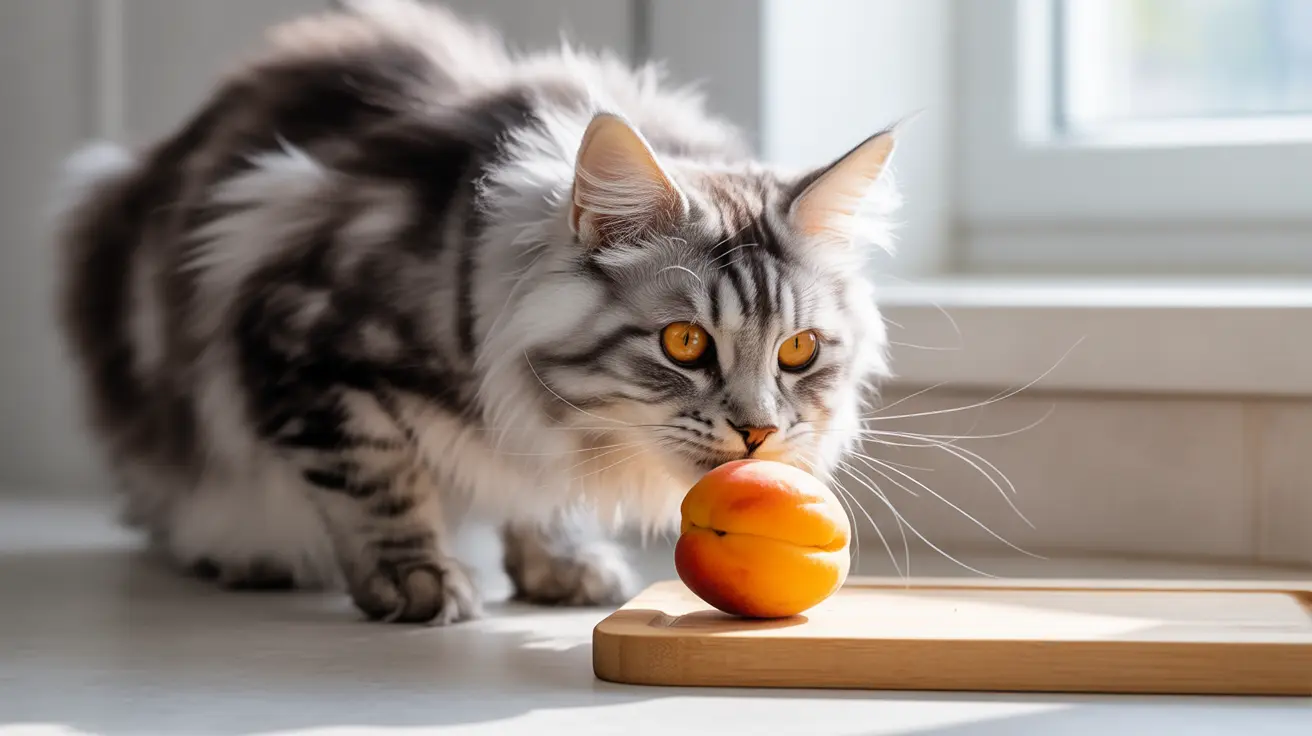If you've ever wondered whether it's safe to share a juicy apricot with your feline friend, you're not alone. While cats can technically eat apricots, there are important safety considerations and limitations to keep in mind. This comprehensive guide will help you understand everything you need to know about feeding apricots to cats, including potential risks and proper serving methods.
As obligate carnivores, cats don't naturally seek out fruits in their diet. However, some cats may show curiosity about these sweet treats. Let's explore when and how apricots can be safely offered to your feline companion.
Safe vs. Toxic Parts of Apricots for Cats
Understanding which parts of an apricot are safe for cats is crucial for your pet's health and safety.
Safe Parts
- Fresh apricot flesh
- Apricot skin (in moderation)
Dangerous Parts
- Pits (stones)
- Stems
- Leaves
The flesh and skin of apricots are non-toxic to cats and can be safely consumed in small amounts. However, the pit, stems, and leaves contain dangerous compounds that can release cyanide when ingested, potentially leading to severe poisoning.
Health Benefits and Limitations
While apricots contain various nutrients beneficial to humans, cats process these differently:
- Vitamin A (cats can't efficiently convert beta-carotene)
- Vitamin C (cats produce this naturally)
- Fiber (can aid digestion in small amounts)
- Antioxidants
- Potassium
Despite these nutrients, cats derive minimal nutritional benefit from apricots due to their specialized digestive system designed for processing meat.
Safe Feeding Guidelines
If you choose to offer apricots to your cat, follow these important guidelines:
Preparation Steps
- Thoroughly wash the apricot
- Remove all pits, stems, and leaves
- Cut the flesh into small, manageable pieces
- Offer only a small amount (about the size of a fingertip)
Frequency
- Limit to once or twice per week
- Treats should not exceed 2% of daily caloric intake
Warning Signs of Apricot Poisoning
If your cat accidentally ingests toxic parts of an apricot, watch for these symptoms:
- Difficulty breathing
- Dilated pupils
- Excessive panting
- Vomiting
- Bright red mucous membranes
- Lethargy
- Collapse
If you notice any of these symptoms, seek immediate veterinary care.
Frequently Asked Questions
Can cats safely eat the flesh and skin of apricots?
Yes, cats can safely eat small amounts of apricot flesh and skin. However, these should be thoroughly washed and served in tiny portions as an occasional treat only.
Why are apricot pits, stems, and leaves toxic to cats?
These parts contain compounds that release cyanide when ingested. Cyanide is highly toxic to cats and can be fatal if not treated immediately.
How much apricot is safe to give a cat as a treat?
Offer no more than a small fingertip-sized piece once or twice per week. Treats should not exceed 2% of your cat's daily caloric intake.
What symptoms indicate cyanide poisoning in cats from apricot ingestion?
Key symptoms include difficulty breathing, dilated pupils, panting, vomiting, bright red mucous membranes, and lethargy. These require immediate veterinary attention.
Are dried apricots safe for cats, and how should they be prepared?
Dried apricots are safe in very small amounts if they contain no added sugars or preservatives. However, fresh apricots are preferred as they're easier for cats to digest.
Conclusion
While cats can eat the flesh of apricots safely, it's important to remember that they don't need fruits in their diet. If you choose to offer apricots as treats, do so sparingly and with careful attention to removing all toxic parts. Always prioritize a balanced, meat-based diet for your feline friend's optimal health.






